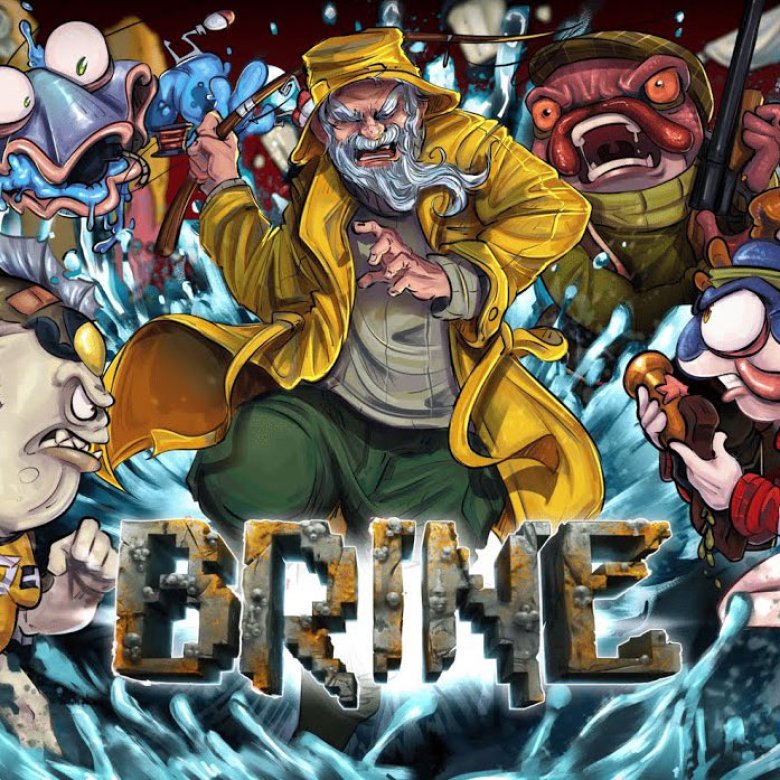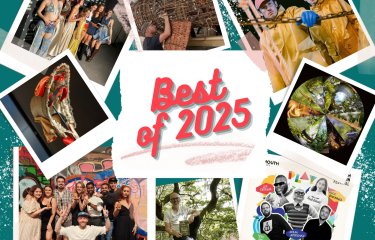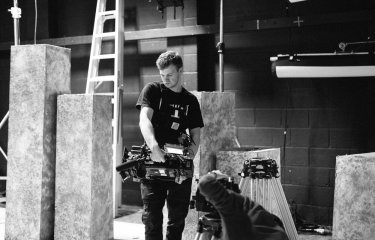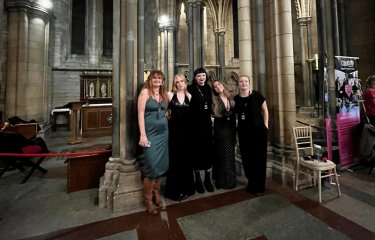Falmouth final-year project mixes retro FPS mayhem with Cornish scenery
06 May 2025

Slippery sea creatures, battered cod, and cannonball chaos – welcome to BRINE, the chaotic Cornish shooter reeling in attention at Falmouth’s Games Academy.
Developed by third-year students from Studio Whalefall, BRINE is a fast-paced “boomer shooter” inspired by 90s classics like DOOM and Quake, with a distinctly Cornish twist. Players step into the well-worn boots of a grizzled fisherman, armed to the gills with quirky weapons, and tasked with defending their picturesque harbour town from an onslaught of mutated seafood. From killer conger eels to pixelated pasties, the game blends nostalgia, slapstick horror and a deep affection for local culture into one unforgettable experience.
In this interview, project lead Willem Trevaskis reflects on the journey from throwaway joke to full-blown game, shares the team's unique approach to retro-inspired development, and offers a peek behind the scenes of one of the Games Academy’s most inventive final-year projects.
Where did the idea for BRINE come from?
It wasn’t one sudden spark, but a series of moments that built into something bigger. Long before BRINE – and even before I came to university – I’d been jotting down video game ideas in the Notes app on my phone. Most are half-baked or long forgotten, but some stick. One of those formed the seed of Fatalware, a retro-inspired first-person shooter (FPS) I made with Andy Aksu (BRINE’s Art Lead) during a second-year module. That project gave me my first taste of leading a game, and although it wasn’t truly a shooter – more of a "Boomer-Runner" – it taught me a huge amount.
The idea for BRINE properly emerged one summer in Falmouth. I was sat outside with my housemate Cosmo when the idea of a Cornish parody of DOOM came up. We laughed about it – then I started modelling benches from the Chain Locker on Falmouth’s Custom House Quay. One by one, more housemates joined in. The rest is history.
What were your influences for the look and feel of the game?
Our aesthetic is inspired by the classics: DOOM, Quake, Half-Life – and more specifically, BLOOD (1997) by Monolith. I had a eureka moment while replaying BLOOD: I set an enemy on fire with a spray can and lighter, and their ridiculous death animation was so unapologetically “gamey” it reminded me why I love this genre.
That sense of raw, readable, gameplay-first design is often missing from modern AAA games, which prioritise realism at the expense of clarity. With BRINE, we wanted to embrace that arcade energy and design spaces as playgrounds for action – not simulations of the real world.
Visually, BRINE is deliberately lo-fi. It might look primitive, but it’s incredibly labour-intensive. Our enemies are modelled in 3D, textured, then converted into 2D sprites using Aseprite software – usually eight angles per animation. One enemy, the Bream, has two behavioural states, meaning sixteen walking animations. It’s time-consuming, but it gives the game a tactile, handmade quality.
Why base it in Cornwall?
Because Cornwall is strange – and we love it for that.
Think of BRINE as a love letter to the region, written in pixelated fish guts.
The familiar setting makes it instantly relatable for locals and delightfully odd for newcomers. Like DOOM had demons, we’ve got monstrous fish, twisted folklore, and nail-gun combat on cobbled streets. We want players to laugh, recoil, and revel in the weirdness.
What will be in the final game?
The demo you’ll see at this year’s Games Expo is just the beginning – a vertical slice. We’ve already mapped out new locations, enemies and weapons, with plans to venture beyond Falmouth into places like Tintagel. There’s also a story in the works. Don’t expect walls of text – it’s an FPS after all – but we’re aiming to weave in a narrative that’s both compelling and Cornish. And of course, expect bigger and badder fish.
We're excited to continue the project after graduation, supported by the Games Academy Incubation programme. We'll have a year of access to software, mentoring, studio space, and opportunities to pitch at industry events. It’s a brilliant chance for us to bring the game to market and take the next steps in our journey as a business and indie studio.
Are you working with any Cornish businesses?
Yes! Cornwall isn’t Cornwall without its local icons – Kelly’s Ice Cream, Rattler, and so on. We’ve been reaching out to local brands to include them subtly in the game. Think set dressing, not sponsorship – we’re not making an ad. Healey’s were excited for us to include Rattler, and we’ve had great responses from businesses around Falmouth. If any other local companies are interested, we’d love to hear from them.
How have you worked together as a team?
We’re a tight-knit group, working with weekly Scrum meetings and daily studio sessions. Fraser Davies, our project manager, keeps us on track – the game genuinely wouldn’t be what it is without him. We're all “T-shaped” developers, meaning we each have specialisms but pitch in wherever needed. Designers animate, artists code – everyone contributes.
We’ve also got a “B-Team” of past Falmouth students and friends who dip in when they can. From asset creation to concept art and UI, they’ve been invaluable. The energy is collaborative and chaotic in the best way – no rigid hierarchy, just passionate people bouncing ideas around.
What platforms, tools and challenges have you tackled?
We’re building BRINE in Unity, with a lot of art created in Blender, Maya and ZBrush. Blender in particular has been crucial – it’s free, has loads of documentation, and suits our workflow perfectly. Converting 3D enemies into animated 2D sprites has been our biggest technical challenge, especially when working with multiple enemy states and directional sprites.
Joseph Ralphs, our programmer and tech lead, is the glue holding it all together. From enemy behaviours to dynamic lighting for 2D sprites in a 3D space, Joe bridges the gap between art and gameplay. Without him, our monsters wouldn’t be half as interesting.
The Games Academy staff have been incredible too. Weekly playtests, ongoing feedback, and support from our supervisor Phoebe Herring – who just happens to be a retro FPS expert – have shaped the game from the start.
How has collaboration across different courses helped?
Working with students from different courses has been eye-opening. We’ve all learnt from each other – whether it’s designers learning Blender or artists understanding level design. That cross-pollination of skills makes us stronger developers and better collaborators.
This experience is also preparing us for the future. Whether or not BRINE becomes a full-time venture after graduation, the professional experience of working together, managing tasks, and adapting to challenges is invaluable. It’s been tough – but absolutely worth it.
What advice would you give to students thinking about studying games at Falmouth?
If you're anxious about applying – I get it. After A-levels, I worked in hospitality and the idea of a career in games felt like a fantasy. It wasn’t until I spoke to a friend studying at Falmouth that I realised it could be real.
Switching careers was scary, but it was the best decision I ever made. If you love games, obsess over their details, and have a passion for making them, Falmouth is the place to turn that obsession into a skill. The Games Academy nurtures that passion and surrounds you with others who share it.
And yes – at Falmouth, playing games really is part of your course. Don’t let fear hold you back.




